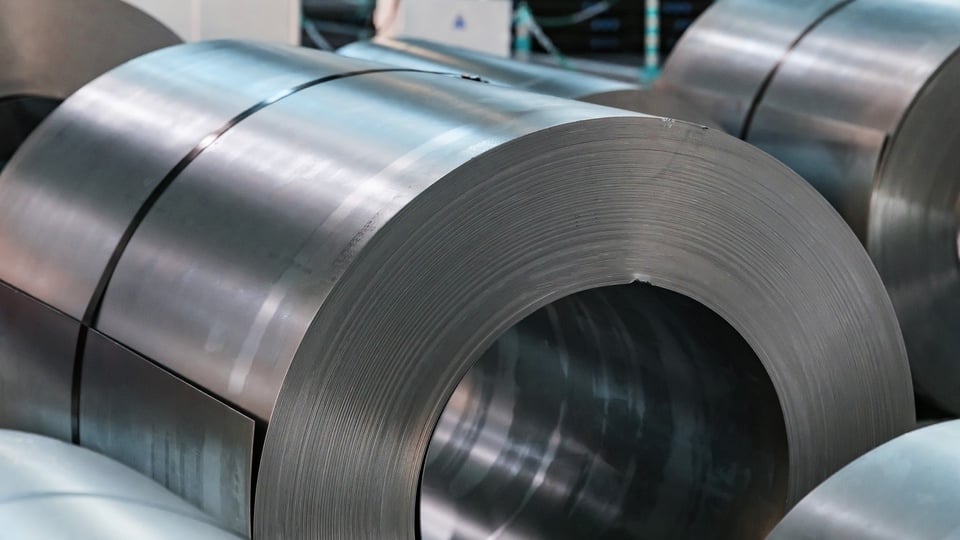KRYTON Metals Blog

5 Metal Fabrication Trends to Watch in 2023
The metal fabrication industry is expected to experience many exciting boosts this year. Recent innovations have led to several manufacturing advances that could open doors to new possibilities. Meanwhile, multiple trends are creating the potential for cost-effective alternatives to traditional processes. This article will explore the five most prominent trends to help you dominate the metal fabrication landscape.
2023 Metal Fabrication Trends
As we enter the new year, metal fabricators must update their knowledge about the latest trends and technologies. These factors can shape the industry, determining market relevance, transforming consumer expectations, and even changing ISO regulations. Let’s take a closer look.
#1. Supply Chain Issues
Due to COVID-19 and other events of 2021 and 2022, global supply chains are kinked in many areas. Additionally, experts predict the impact to have a lasting effect on metal fabrication. Businesses and consumers have already noticed widespread shortages of essential materials and goods.
Meanwhile, inflation rates have scared away many buyers, worsening supply chain disruptions. Some vendors have been forced to offer steep discounts on surplus inventory. The continual depletion could also mean higher steel prices in the future.
#2. Fluctuating Steel Demands
Because of the variable conditions of global steel inventories, material costs can be unpredictable. Look out for a trend in price gouging and shifting demands. Fortunately, however, some experts have better news. Many predict a slow recovery throughout the year with 1% growth in 2023.
Increased energy prices, bolstered interest rates, and failing consumer confidence could also play a role. Intertwined industries might be forced to work more closely with competitors or reconsider designs to regain traction. Automotive, aerospace, medical, and food products industries could get hit the hardest.
#3. Recession Aftershocks
Multiple factors contributed to the recent US recession, and many of them impacted the trajectory of the metal fabrication industry. As the economy continues to recover, these trends will have the largest footprints:
- Population urbanization
- Shifting trade regulations
- Automobile electrification
- Infrastructure investments
- Manufacturing sustainability
The events from the last three years are calming down, and our economy is gradually improving. However, war and conflict could alter projections and increase or decrease metal fabrication demands, particularly in the form of materials for roads, bridges, automobile components, and other steel-reliant products.
#4. The Rise of Rapid Prototyping
Rapid prototyping (RP) is already helping many industries innovate new products and improve existing ones. Teams can render accurate digital models and troubleshoot or experiment before mass production. This means more precise metal fabrication and less waste.
Engineers use RP to adjust tolerances and evaluate changes during an inspection. It’s also used to test the outcomes of operations such as metal spinning, welding, and five-axis laser cutting, however, it’s essential to understand that the material properties and characteristics obtained through rapid prototyping can significantly differ from those of traditional metal fabrication processes. As more industries compete to remain relevant in a volatile economy, expect rapid prototyping to become the new standard in high-quality manufacturing.
#5. A 3D Printing Boom
3D printing, or additive manufacturing, has opened many doors for modern metal fabricators. This high-speed technique allows teams to develop complex designs with intricate geometries faster than with many other methods. Using sustainable materials makes the process cost-effective and eco-friendly.
Make the Most of Metal Fabrication Trends
There is no doubt metal fabrication will continue to adopt the latest manufacturing technologies. It’s also clear that teams must consider new methodologies to maintain a competitive edge. Here are some tips for making the most of the evolving environment:
- Create a thorough plan: Decide which elements you want to include and how geometries relate to the final design. Let your team know if there are any specific concerns or probable roadblocks.
- Get a quote: Calculate a flexible budget with a service estimate. Metal fabrication experts can help you cut costs wherever possible and accentuate the best features of your design.
- Determine your parameters: Find out whether your concept is feasible or requires additional steps. If so, determine how needed changes would affect your pricing, and adjust the budget accordingly. Also, look at the competition to discover what they’re doing differently.
- Beat the clock: Use rapid prototyping and 3D printing to produce parts quickly. These technologies help align fabrication goals with industry standards while eliminating excessive lead times.
- Discuss the details: Each project presents unique challenges. Ask your metal fabrication team how your operation can make the most of metal fabrication trends in 2023.
There are many potential risks for metal fabricators in 2023, but the overall outlook is promising. Learn about the KRYTON Metals process or subscribe to our blog for more industry updates.
